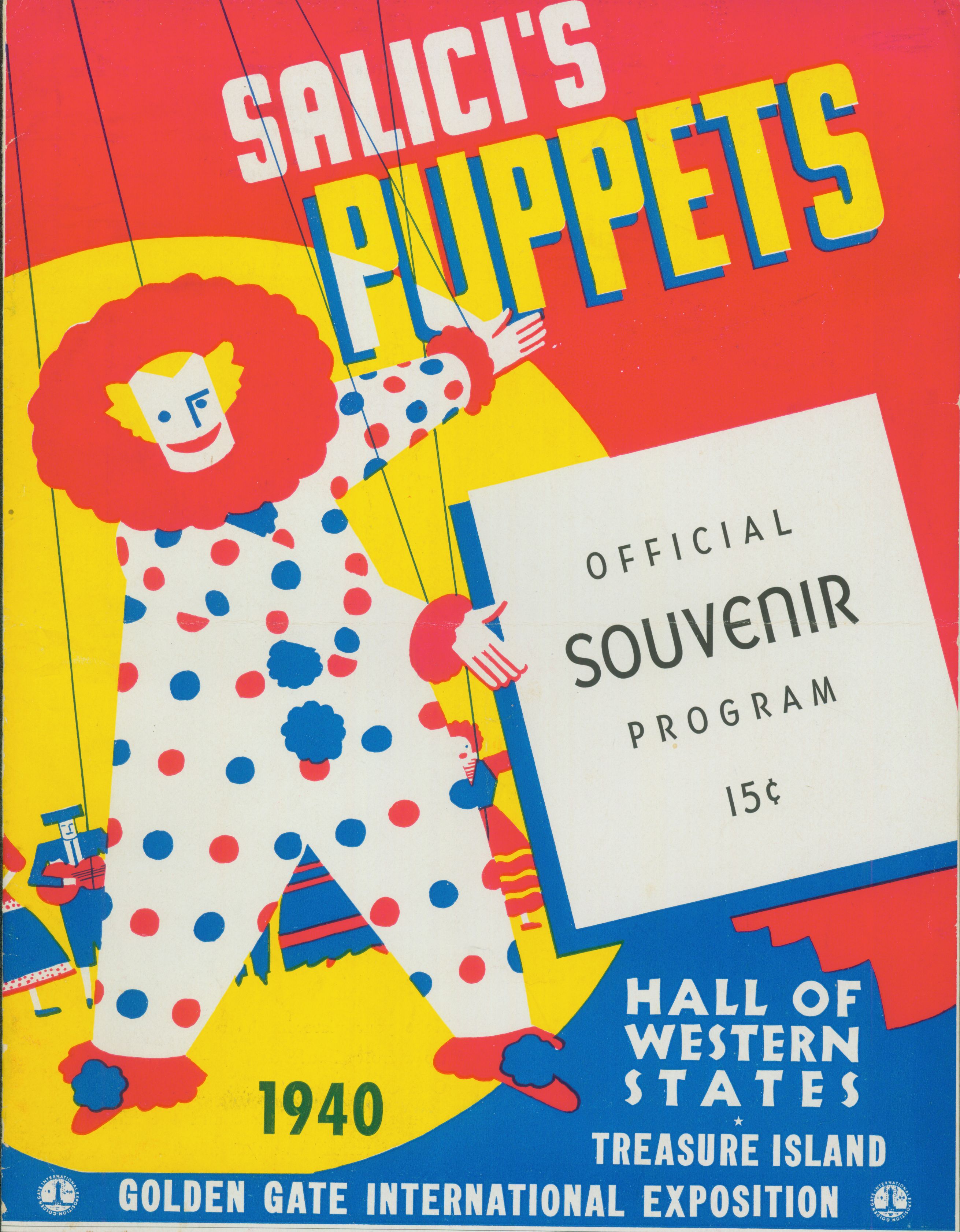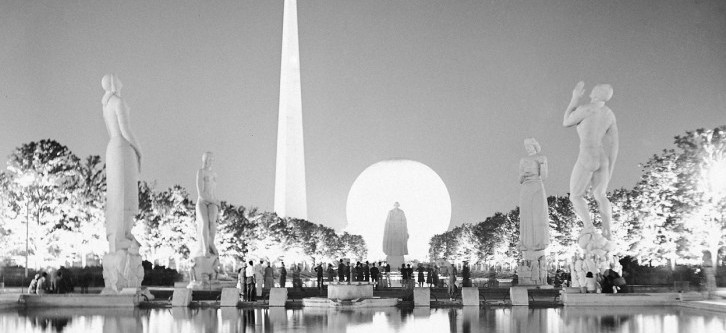To mark the 75th Anniversary of 1939, we've asked some ABAA members to discuss publications from that momentous year. Marc Selvaggio, whose specialties include World's Fairs and International Expositions, takes us down memory lane as he examines the publications of the 1939 World's Fairs held in New York and San Francisco.
On September 23rd, 1938, a group of men in dark suits gathered around a construction site in Queens and watched as a 90-inch, 800-pound cylinder, made of the special new alloy called “Cupaloy,” was lowered down a 500-foot tube. The solemn ceremony involved in the placement of this cylinder—officially known as the Westinghouse Time Capsule– inaugurated the site for the New York World’s Fair. The Fair itself opened to an enthusiastic public on April 30, 1939.
Meanwhile independent of the planning frenzy in New York, crews were busy creating a fabricated spit of land in the middle of the San Francisco Bay, a square 400-acre piece of artificial land-fill that would be romantically labeled, “Treasure Island.” Here, on February 18, 1939, the Golden Gate International Exposition was officially opened. Both Fairs would return in 1940, more to correct their balance books (ultimately, unsuccessfully) than for public demand.
.jpg)
The Westinghouse Time Capsule contained what its creators considered “a complete record of our civilization”—a selection of fabrics, a fountain pen, seeds and metals, a slide rule, Barney Google comics, microfilm of hundreds of books, and a magnifying glass to read said material, movie films and instructions for those lucky souls who would open the Capsule—in the year 6939!—to construct an actual movie projector. A description of the Capsule and its contents was published in a book entitled The Book of Record of the Time Capsule of Cupaloy, Deemed Capable of Resisting the Effects of Time for Five Thousand Years, Preserving an Account of Universal Achievement, and printed on what was considered to be permanent paper. Three thousand copies were produced and distributed to museums, libraries, and other repositories. And it was such copy that I discovered one day in 1972 in a bookstore along the Maine coast.
.jpg)
That book was the spark that ignited my interest in world’s fairs and international exposition, for that book, and the Capsule itself, seemed to represent to me the spirit of these events. The combination of sheer hubris, technological advancements, promotion of business and industry—the Westinghouse Time Capsule!—and sometimes just sheer hucksterism. Events that captivated, educated, entertained the visitors. Where new ideas in architectural design (including the private home as in the “Town of Tomorrow”) were presented, where new technological was introduced….such as the first commercial television broadcast from the New York World’s Fair, as well as talking robots (Westinghouse’s Electro) and those attractive young women at the Bell Systems exhibit with their Demonstration Telephone Call Center.
.jpg)
The New York World’s Fair of 1939 consisted of 100 exhibition buildings, with over 1,500 exhibitors, and with 60 nations and international organizations present in an array of pavilions. Plus there were numerous vendors hawking events and products along the Amusement Zone, with its typical fun-park rides (e.g., Parachute Jump, Silver Streak, Auto Dodgem), its entertainment (e.g., Billy Rose’s Aquacade or Frank Buck’s Jungleland), and it exhibits of questionable taste, such as the Infant Incubator, the “Living Magazine Covers” and the “Arctic Girls”—for a World’s Fair diet involves lots of cheesecake—and the town of midgets (“Little Miracle Town”).
.jpg) The San Francisco counterpart had its own features and style of architecture, with that Fair's themes and exhibits focusing more on the countries and culture of the Pacific Rim. But of course, it also had its own Zone—here called the “Gayway.” As in New York, one encountered a range of entertainments, including an exhibit called “Arts and Models” featuring top-less girls in artistic poses… sketchpads available at the door! And of course, Sally Rand’s Nude Ranch.
The San Francisco counterpart had its own features and style of architecture, with that Fair's themes and exhibits focusing more on the countries and culture of the Pacific Rim. But of course, it also had its own Zone—here called the “Gayway.” As in New York, one encountered a range of entertainments, including an exhibit called “Arts and Models” featuring top-less girls in artistic poses… sketchpads available at the door! And of course, Sally Rand’s Nude Ranch.
The occasion of both Fairs spawned an amazing amount of souvenirs and tshutkas, for which there is an active collecting market, particularly ones New York featuring the wonderfully ironic structures, the Trylon and Perisphere…ashtrays, pencil sharpeners, celluloid pins, plates, posters and postcards, jewelry and trinkets, asbestos hotplates and spoons (oh, the spoons).
I, however, have focused on the pamphlets, flyers, brochures, catalogues…and when I find them, amateur photographs taken at the Fairs.
A sampling of such material can be found in my latest Catalogue (142), including the pamphlet on General Motor’s fantastic Futurama…“Here we see the world of 1960!”…with one of the separately-issued pin-back buttons, “I have seen the Future.” 
Alas, a copy of The Book of Record of the Time Capsule of Cupaloy will not be found in my current stock. In 2012, I sold the only copy I ever had of that work to a research library—40 years after my initial bookstore purchase. I hope that in the year 6939, that copy will still be on their shelf. In the spirit of World’s Fairs—I am sure that it will be!



.jpg)
.jpg)
.jpg)
.jpg) The
The 